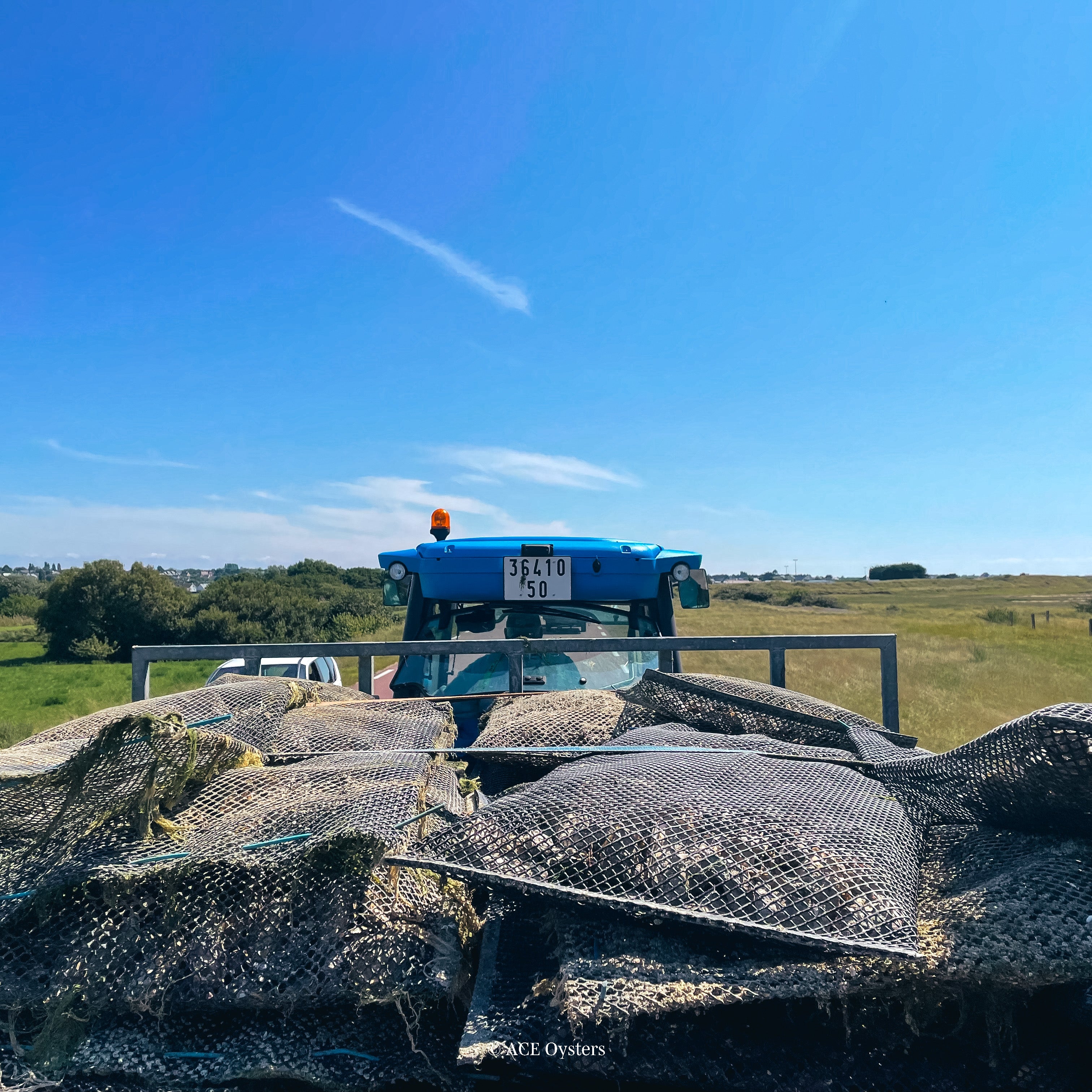The condition and growth of the oyster depend 100% on natural conditions, such as the temperature, which influences the temperature of the water, the quality of the water and the water level. In addition, the oyster has several enemies that live in the same waters. This makes the oyster industry a risky industry to work in. The advantages and disadvantages are explained below.
Oysters are affected by temperature
Temperature can affect oyster survival. For example, to keep a Pacific oyster alive, the temperature must be above 0 degrees Celsius and it grows best at a temperature between 11 and 34 degrees. For the oyster mushroom to develop favorably, the temperature must be above 23 degrees Celsius.
Oyster farmers are also taking advantage of the change in the water level. In the Oosterschelde the water is 'low' twice a day and 'high' twice a day. This means that the water is changed approximately every 6 hours. Some plots go "dry" when the water is low and are submerged when the water comes back up. This means that they are dry for an average of 2 hours twice a day, depending on the location. The alternation of drought and flooding improves the process of spawning the oysters and makes them stronger.
Oyster borer: one of the oyster's greatest enemies
Oyster farmers are also taking advantage of the change in the water level. In the Oosterschelde the water is 'low' twice a day and 'high' twice a day. This means that the water is changed approximately every 6 hours. Some plots go "dry" when the water is low and are submerged when the water comes back up. This means that they are dry for an average of 2 hours twice a day, depending on the location. The alternation of drought and flooding improves the process of spawning the oysters and makes them stronger.
The oyster borer is a predatory snail that originally comes from Asia. He drills a hole through the shell of an oyster and then sucks out the soft flesh of the oyster (or other shellfish). Even though it only eats a very small piece of the flesh (+-1%), it creates the opportunity for other marine life to get into the oysters and eat the rest of it, causing the death of the oyster.
In July 2015 it turned out that the snail had killed a large part of the Creuse oysters in the Oosterschelde. In 2016 they found out that almost 90% of young oysters had been killed (NOS, 2016). The situation became so serious that an emergency plan was drawn up in collaboration with the province of Zeeland and the Ministry of Economic Affairs.
Ways to protect the Oysters from the borer
This emergency plan included a solution for cultivating the oysters in a different way. One of them grows them on oyster tables. The oysters are put in "bags", which are placed on these tables. In this way, the oyster driller has no way of getting to the oyster because the drillers first live on the seabed and secondly cannot get into the bags.
However, this technique has some drawbacks. First of all, it is a very expensive way of farming. The tables and bags have to be made and that costs an average of €50 per table and €2.50 per bag. In addition, it also costs a lot of manpower, which ultimately costs more money. The work is very physically demanding, which is why it is difficult to find people to do the work. In the summer, the bags should be shaken and turned every 2 weeks if good quality oyster is desired. In addition, when the oysters have grown, they no longer fit in the bag and must be redistributed in new and clean bags, in case the farmer does not spread these oysters over a plot. The bags need to be cleaned twice a year as the sea green grows over them and this leads to a decrease in nutrients for the oysters. To have an easy consumption oyster, the bags are shaken 10 times and redistributed twice, which takes about 2 years.
Starfish vs Oysters
In addition to oyster borers, starfish are also a nuisance for oyster farmers. Starfish won't survive on plots that get dry when the water is low, so if oysters are on a higher plot they won't be agitated by it. However, in the deeper plots, the starfish can survive and climb onto the oyster to open and eat it. Although starfish are a major nuisance to the mussel industry, oyster farmers want to protect their oysters from them.
To combat these starfish, a so-called “Star mop” has been created. When the farmer attaches this mop to his ropes and goes over the bottom of the sea, the starfish stick to the ropes. After a while, the farmer takes the mop out of the water and puts it in a tub full of hot water, where the starfish die. The starfish are then returned to the sea, where they become food for other animals.
Even Oysters get sick
Not only the living creatures pose a threat to the oyster's survival. There are also various diseases floating through the water. One of them is the Oyster Herpes Virus type 1 (OsHV-1). It was first discovered in the Netherlands in 2010 in the Zeeland Delta. Since 2008, the virus has caused a sharply increased mortality among Pacific oysters along the French, English and Irish coasts (Integrated Fisheries, 2017).
If the temperature of the water is between 16 and 18 degrees Celsius, the virus does not develop properly.

